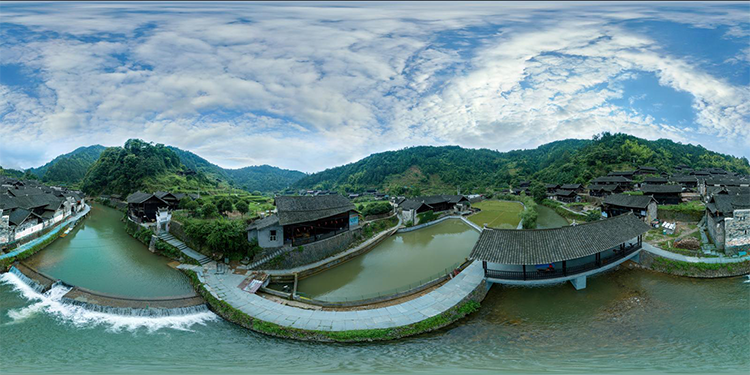Cinnabar Town Travel Guide: Explore China’s Historic Mercury Mines
Introduction:
When the clatter of ore carts becomes an echo of history and 970 kilometers of subterranean passageways transform into an “underground Great Wall,” Cinnabar Town in Guizhou unveils the mystery of China’s mining civilization. Reborn from a millennium of cinnabar (mercury ore) extraction, this distinctive town blends Qin–Han mining relics with daring attractions like cliff-edge infinity pools and glass skywalks. Every cinnabar specimen under your fingertips tells the story of a once-mighty “Mercury Capital,” while living craft demonstrations breathe new life into ancient traditions—making the town both an industrial heritage site and a journey through time.
1. Soul Imprint: The Industrial Wonder of a Thousand-Year Mercury Mine
“The only mining site in China named for its cinnabar culture”—the core value of Cinnabar Town lies in its legendary role as the nation’s mercury center. Since the Qin and Han dynasties, the Wanshan (万山) area has produced cinnabar used in imperial elixirs. Its thousand-year extraction history carved a 970 km network of underground galleries, still recognized by the Guinness World Records as the longest mining tunnel system.
Walking the repurposed tunnels, you can see fire-and-water cutting marks left by ancient miners alongside Soviet-era mechanical tracks—layered evidence of China’s industrial evolution.
Three must-see industrial marvels:
– Underground Great Wall expedition: The tunnels hold a steady 17°C; multimedia light-and-sound displays reconstruct historic mining scenes while giant cinnabar crystals glitter under spotlights.
– Cliff-edge infinity pool challenge: An infinity pool set into a vertical mine face delivers vertigo-inducing views and a raw industrial aesthetic.
– Soviet experts’ compound walkthrough: Fully preserved 1950s red-brick Soviet-style buildings, complete with period telephones and geological maps, transport visitors to the era of Sino-Soviet mining cooperation.
2. Time-Folded Culture: The Historical Codes in Cinnabar Traditions
Every inch of Cinnabar Town is steeped in cultural genes. As the core material in Daoist alchemy, cinnabar was once coveted by emperors—Qin Shi Huang sought it for immortality, and Ming physician Li Shizhen documented its medicinal uses in the Compendium of Materia Medica. The town museum displays a continuous line of mining tools from Han-era crucibles to Qing dynasty furnaces, while a national-level intangible heritage workshop demonstrates how craftsmen transform raw ore into vivid seals and jewelry using traditional techniques.
Legendary highlights:
– The miners’ generational legend of the “Treasure-King Bodhisattva,” said to protect workers underground.
– In the 1960s, Wanshan’s mercury output accounted for around 60% of the nation’s production; Soviet-era beneficiation equipment still stands as a monumental relic.

3. Mountain, Water, and Hardcore: A Surprising Landscape Collision
Unlike a typical water-town, Cinnabar Town pairs heavy-industry drama with wild natural beauty. Glass walkways stretch across former pits, with sheer voids below; rusted machinery set against mountains of rhododendron creates a hard–soft visual contrast. At dusk the exposed ore veins flash a blood-red hue—like the earth’s cinnabar lifeblood flowing across the landscape.
Seasonal highlights:
– Spring (Mar–May): Rhododendrons burst across the mining slopes, transforming industrial ruins into a surreal floral tableau.
– Summer (Jun–Aug): Underground tunnels offer natural respite from heat; the cliff-edge pool provides a unique aquatic thrill.
– Autumn–Winter (Sep–Feb): Morning mists turn the pits into dreamlike scenery; Lunar New Year period features lively miner folk performances.
4. Practical Guide: From Underground Adventure to Craft Workshops
Travel tips:
– By air: About a 1-hour drive from Tongren Fenghuang Airport. By rail: Take high-speed service to Tongren South Station, then a tourist shuttle (approx. 1.5 hours).
– Consider the combined “Tunnel + Glass Skywalk + Museum” ticket (roughly RMB 120); students typically receive a 50% discount.
Suggested itineraries:
– Half-day highlights: Soviet Compound Plaza → Underground Great Wall (ride the miners’ train) → Cliff Pool viewing platform.
– Full-day deep dive: Add a cinnabar intangible-heritage workshop (DIY polishing) and vintage 1950s-style photo session at the mining film set.
Practical notes:
– The tunnels are humid—bring a light jacket; wear non-slip shoes for the glass skywalk.
– Every Saturday night features the live show “Millennium Mercury Soul,” with English subtitles—reservations recommended.

5. Flavors and Dreams: Sleep Inside History
At the town exit, the miners’ canteen serves authentic Guizhou dishes—try cinnabar tofu (a local specialty made with mineral water and soy) and the region’s oil tea. Overnight stays in converted miners’ dorms—”cliffside guesthouses”—mix rough concrete walls with reclaimed wood furniture for an industrial-retro vibe. Open the window and the star-lit mine pit becomes your night view.
Conclusion:
Cinnabar Town reads like a multidimensional history book—pages of imperial quests for immortality, miners’ sweat and sacrifice, and the grinding gears of Soviet aid—now annotated by travelers’ wonder. When you trace a glowing cinnabar crystal in the 970 km underground maze, you’ll realize this is not a terminus but a mine car headed deeper into time, carrying explorers who revere both industrial achievement and nature’s raw power.


